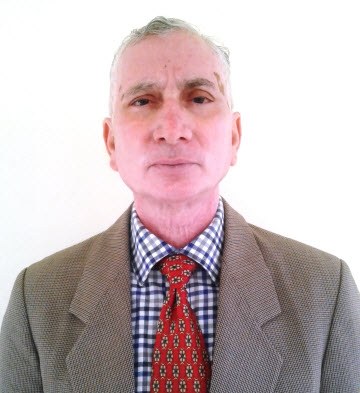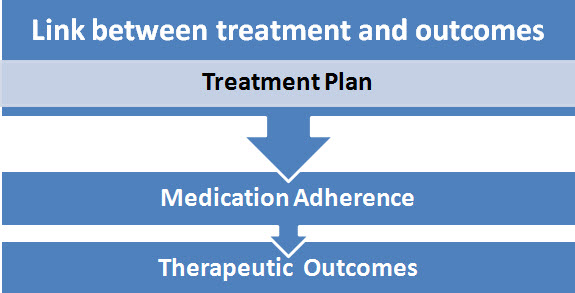
About Author
Dr. R. S. Thakur
Chief Editor, Journal of Pharmaceutical Research
Krupanidhi College of Pharmacy, Bengaluru-560035.
Email: drramsthakur@gmail.com
PREAMBLE
All over India Pharmacists are celebrating the 60th National Pharmacy Week. This is an annual event during the 3rd week of November since 1962. The major focus of NPW celebrations is to create awareness amongst the public, other healthcare providers and the authorities about the importance and relevance of the theme and in particular and about the advances in pharmacy profession and paradigm shift in practice which modernizes the role of the pharmacist globally. The 60th National Pharmacy Week (NPW) celebration from 21st to 27th November, 2021 has the theme: "Pharmacist: An integral part of healthcare"
INTRODUCTION
National Pharmacy Week celebration started in India for the first time in 1962 under the aegis of Indian Pharmaceutical Association. The theme of the first NPW in India was “Pharmacy as a Career”. In September, 1964 Pharmacy Council of India brought out a publication “PHARMACY as a career”. Cover page of the booklet is Fig1

Fig1. Cover page of Pharmacy Council of India’s publication “PHARMACY as a career”
It was in the year 1968 that the author attended NPW celebration for the first time as first year student at Patna. Theme of the 7th National Pharmacy Week 1968 was “Horizon in Pharmacy” and Chief Guest of the function in Patna was the legendry Dr. A. K. N. Sinha, President of World Medical Association.
The theme of 19th National Pharmacy Week 1980 was “Treat Medicines with Respect”. A photograph of Indian Pharmaceutical Association (Bengal Branch) function of 1980 held in Calcutta, being addressed by the author is Fig 2.

Fig 2. Author addressing 19th National Pharmacy Week celebration organized by IPA (Bengal Branch) at Calcutta in 1980.
Overseas Celebration
National Pharmacy Week is celebrated in USA under the aegis of American Society of Health-System Pharmacists (ASHP). ASHP loudly asserts “pharmacists advancing healthcare”. ASHP has earmarked 3rd week of October every year for their NPW celebration. This year the celebrations were held from 17th October to 23rd October, 2021. In USA, NPW celebration began in 1925 at the initiative of American Pharmaceutical Association (APhA). A North Carolina Pharmacist Robert J Ruth had moved a proposal for National Pharmacy Week celebration during the annual meeting of APhA in 1924 and the first celebration was held from 11th to 17th October, 1925.1 The idea behind Ruth’s proposal was that the contribution of pharmacists in healthcare of the patients and the community at large must be commemorated to invigorate sense of professional ethics among pharmacists and their responsibilities towards patient care in providing safe and effective medicines.
Seventy nine years after the launching of NPW in America, in 2004 the month of October was officially designated as American Pharmacists’ Month with a permanent theme “Know Your Medicine, Know Your Pharmacist.” The promotion campaign to feature role of pharmacists and their contribution to healthcare system continues in US too.
Instead of National Pharmacy Week, Pharmacists of Turkey observe National Pharmacy Day on May 14, every year since 1968. Their nationwide programme includes conferences, meetings, awareness campaigns, health promotion activities, social activities and utilizing media to convey their message to masses.
The Theme Perspective
The Covid-19 pandemic is testing time for all and sundry. The need of medicines and the magnitude of increased demand of medicines during covid-19 have been very well met by the Indian pharma sector’s supply chain and the community pharmacists and hospital pharmacists across the country, besides meeting overseas demands well in time. This exemplifies the extent of sense of commitment of pharmacists towards availability and affordability of quality medicines at all times. Medicines are the most effective armamentarium both for therapeutic and preventive initiatives. However, improper use of medicines always causes serious harm and injury to health. This is the area where pharmacist’s expertise must be fully availed in the interest of health and happiness of every citizen.
Besides the supply and accessibility to medicines another important front that is more demanding for improving therapeutic efficacy of every prescription is counseling and making patients fully aware about their medicines as well as motivating them to religiously comply with the directions for use of medicines and precautions in consuming food and beverages. In this role too pharmacist is the lone health professional who fits well. The importance of counseling and empowering with awareness is well realized, researched and documented across the globe.2
Studies conducted in Canada showed that 50 per cent of Canadians do not take their prescription medications exactly as prescribed. This study further revealed that each year, drug non-compliance is the cause of 10 % of all hospital admissions. Moreover, in case of elderly patient up to 25 % of hospital admissions are due to non-compliance of prescription. In case of Nursing homes this figure stood up to 23 %. Canadian Society of Hospital Pharmacists in its video “The value of Hospital Pharmacists” emphasizes “Every day, hospital pharmacy teams improve your health and save our hospital money. They are trusted and valued members of the healthcare team.”
Another report of Marie T. Brown and Jennifer K. Bussell3 exhorts that the full benefits of pharmacotherapy in long-term treatment of chronic diseases is not fully utilized because around 50% of the patients do not adhere to instruction for taking the medicines. The reasons for poor medication adherence include:
• Factors related to patients - literacy, lack of comprehension, health conditions, dependence upon care giver specially in case of pediatric and geriatric patients;
• Factors related to prescribers - polypharmacy/complex regimen, lack of communication, involvement of multiple specialists for multiple ailments; poor and careless handwriting; and
• Factors related to healthcare system - lack of drug information services, lack of patient counseling facilities, huge rush in government hospitals and health centers etc.
These barriers to medication adherence adversely affect efficacy and safety of therapy. This is a very big challenge for the outcomes of healthcare facilities.
Medication Adherence
WHO defines medication adherence to long term therapy as “the extent to which a person’s behavior – taking medication, following a diet, and/or executing life style changes- corresponds with agreed recommendations from a health care provider.”4
The treatment plan and its outcomes are precisely mediated by medication adherence or in other words it is directly dependent upon medication adherence. This link between prescription and its outcomes is represented in Fig 3.

Fig 3. Link between treatment plan and therapeutic outcomes.
Medication adherence is a behavioral phenomenon and varies from patient to patient, care giver to care giver and disease to disease. There is nothing universal and individual factors dominate the scene. The benefit and risk profile of medication regimen is thus substantially influenced by medication adherence.
Rate of Medication Adherence
It is defined as the percentage of the prescribed doses of the medication actually taken by the patient over the specified period of treatment.5 Various researchers have evaluated and reported the extent of non-adherence to medication regimen that varies from as low as 10% to as high as 92%.6 Literature also testify that in developed countries adherence to therapies averages 50%.7,8 Evaluation of reported data reveal that almost half of the non-adherence is intentional, and the remaining ones because, patients are unable to realize and perceive that they are not taking their medicines as prescribed or the regimen is too complex to religiously follow or adhere too.9
A comparison of medication adherence among patients suffering from acute ailments and those from chronic conditions revealed that in the former the rate of adherence is higher than the latter.10,11 In case of chronic illnesses studies show that approximately only 50% of medications prescribed are taken.11,12
DISCUSSION
Pharmacist’s endeavour makes medication safe and more effective due to following reasons:-
• The patient’s knowledge and understanding of their disease and drug therapy is enhanced as also motivation for compliance;
• Drug related problems are timely identified and remedied, thus risk to patient’s health is reduced;
• The overall management of therapy is improved which results in lower incidence of hospital admissions and a shorter length of stay on admission.
• The overall outcome of therapy and patient’s quality of life is improved.
The pharmacists achieve this lofty goal by:
• Educating patients and optimizing medication by properly monitoring their drug therapies in order to achieve the intended outcomes.
• Providing specialized medication therapy management services for specific patient groups like hypertension, asthma and diabetes.
• Reviewing medication profiles to facilitate appropriate use of medication.
• Providing information/support to help patients understand specific medications and diseases
• Performing follow-up activities to address patient’s concerns regarding their therapy.
• Facilitating communication with the physician and other healthcare providers regarding patient’s concerns.
Pharmacists help the physician and other members of the healthcare team by:
• Providing updated information on medication use to assist in prescribing decisions and serves as a resource for current drug information service.
• Alerting prescribers about contraindications, drug interactions and/or intolerances to drug therapy according to pathophysiological and past/concurrent medication profile of the patient.
• Monitoring patient compliance and the outcomes of patient specific goals.
Therefore, pharmacists are not just another service provider at the dispensaries/pharmacies/medical stores rather they are a valued professional and integral part of healthcare regime.
CONCLUSION
In building healthy nation contribution of pharmacist is immense. Modernization of pharmaceutical care is essential to optimize therapeutic outcomes and improving quality of life of every patient in economic way.
REFERENCES
1. Quick facts about the history of Pharmacy Week - FSHP. fshp.org. (2019, October 18). Available: https://www.floridapharmacy.org/page/APM Accessed 19-11-2021.
2. Beena Jimmy and Jimmy Jose. Patient Medication Adherence: Measures in Daily Practice. Oman Med J. 2011 May; 26(3): 155–159. doi: 10.5001/omj.2011.38 Accessed: 18-11-2021
3. Marie T. Brown and Jennifer K. Bussell. Medication Adherence: WHO Cares? Mayo Clin Proc. 2011 Apr; 86(4): 304–314. doi: 10.4065/mcp.2010.0575
4. Sabaté E, ed. Adherence to Long-Term Therapies: Evidence for Action. Geneva, Switzerland: World Health Organization; 2003. [Google Scholar] Accessed: 18-11-2021.
5. Osterberg L, Blaschke T. Adherence to medication. N Engl J Med. 2005;353(5):487-497. Doi:10.1056/NEJMra050100 [PubMed] [CrossRef] [Google Scholar]
6. Grahame-Smith DG, Aronson JK. Oxford Textbook of Clinical Pharmacology and Drug Therapy. 3rd Edition. Oxford University Press, USA. 2002. [Google Scholar]
7. World Health Organization. 2003. Adherence to long term therapies: evidence for action [online]. Available at http://www.who.int/chronic_conditions/en/adherence_report.pdf
Accessed 16-11-2021.
8. Carter S, Taylor D, Levenson R. 2005. A question of choice- compliance in medicine taking. From compliance to concordance. 3rd ed. London: Medicines Partnership. Available at: www.medicines-partnership.org/research-evidence/major-reviews/a-question-of-choice Accessed 17-11-2021.
9. Ley P. Communicating with patients: improving communication, satisfaction and compliance. Cheltenham, Stanley Thornes Pub Ltd. 1997. [Google Scholar]
10.Jackevicius CA, Mamdani M, Tu JV. Adherence with statin therapy in elderly patients with and without acute coronary syndromes. JAMA. 2002;288(4):462-467. Doi:10.1001/jama.288.4.462 [PubMed] [CrossRef] [Google Scholar]
11.Haynes RB, McDonald HP, Garg AX. Helping patients follow prescribed treatment: clinical applications. JAMA. 2002;288(22):2880-2883. Doi:10.1001/jama.288.22.2880 [PubMed] [CrossRef] [Google Scholar]
12. Col N, Fanale JE, Kronholm P. The role of medication noncompliance and adverse drug reactions in hospitalizations of the elderly. Arch Intern Med. 1990;150(4):841-845. Doi:10.1001/archinte.150.4.841 [PubMed] [CrossRef] [Google Scholar]
NOW YOU CAN ALSO PUBLISH YOUR ARTICLE ONLINE.
SUBMIT YOUR ARTICLE/PROJECT AT admin@pharmatutor.org
FIND OUT MORE ARTICLES AT OUR DATABASE











